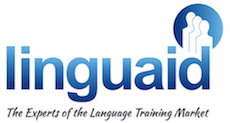6 simple metrics to greatly improve the web marketing of your language school
As web marketing is taking a larger and larger piece of marketing budgets in language schools the world over, naturally marketing managers (and their bosses) are asking themselves how they can track and evaluate their efforts.
How can you relate a boring spreadsheet to the creative and sometimes mind-numbing marketing work you carry out on your language school website? Is it actually possible? Isn’t marketing about ideas, creativity and innovation? About USPs, branding and niches?
Here’s my bet. I bet you the little finger on my left hand then when you were growing up, and your Auntie Gladys (or equivalent) leaned down and asked with a smile “And what do you want to do when you grow up?”, you didn’t reply proudly “Well, I’d like to help sell language training, Auntie Gladys!”.
I am so sure of my potential digit-losing bet because language school marketing is a new profession, and web marketing even more so. We are now all pretty much in agreement at how important it is, yet as a new profession, language school owners and directors quite rightly can view it with a bit of suspicion and wonder exactly how much it is worth. How much budget should be put into it?
An answer can be found in metrics. The indicators that can help you track and measure your web marketing performance. Done properly, metrics help you:
- Set objectives
- Improve performance (and motivation)
- Justify your budget (and even your position)
Metrics should be easy and simple to implement and track, and they should cover the whole marketing activity from traffic generation to client (student) follow-up.
So, dear reader, get yourselves comfortable. Go and get a large mug of hot chocolate, poke the fire, get your comfy slippers and let’s delve into the world of metrics for your language training activity. Here are 6 of them to help you get started:
Metric n°1 for your language school web marketing: Number of backlinks
 As an incisive man (me) once quite brilliantly said “You site ain’t worth squat if no one can find it”. The first rule of the language training website club is “Get traffic”. The second rule of the language training website club is “Get traffic”. I’ve written quite a lot about this subject (how to get it) elsewhere on the blog, and will continue to do so. Today is about how to measure it.
As an incisive man (me) once quite brilliantly said “You site ain’t worth squat if no one can find it”. The first rule of the language training website club is “Get traffic”. The second rule of the language training website club is “Get traffic”. I’ve written quite a lot about this subject (how to get it) elsewhere on the blog, and will continue to do so. Today is about how to measure it.
“But what, prithee, is a backlink?”, I hear some of you cry out, spitting forth marshmallows and hot chocolate froth onto your laptop screen. Well, a backlink is basically a link that points from one other site to your own site of literary genius. Those boffins at Google have decried that it is no longer the number of backlinks that point to your website but the quality of them that is important. Quality can be determined by the page rank of the website pointing to your site. The more quality backlinks you have, then the more Google boffins (I like to consider them real people rather than cold, faceless algorithms, but I’m just like that) will think that your website is an authority, and the better your website will appear in the Google search rankings.
So to cut a perilously long story short, if you want more people to find your site, then you need more nice people to point their site to it. And these nice people have to have sites that have a good page rank (at least 4 out of 10).
Deep breath.
And the metric you need then, is the number of new quality backlinks per month. A good objective to set is 20 (if you’re currently at 0).
“But how, prithee, do I know what the page rank of the backlinks are, and where, in all that is holy about language training, do I find the ones pointing to my site in the first place?” I hear you mumble with frustration whilst you wipe the screen with your sleeve.
To find out what the page ranks are, check out the page rank checker here: http://checkpagerank.net. I’m now prepared to bet the little finger of my right hand that the first web site you put in there will be your own. But hey, if I’m wrong, who needs the pinkie anyway.
To find out which backlinks are currently pointing to your site, then you need to go to https://www.google.com/webmasters. If you have a google account, then you can set it up quite quickly. Webmaster tools also can usefully help you with errors on your site and even with a few search queries that you didn’t even know about.
To get some really great information about backlinks, you should have a look at the site of Jedi backlink Master Brian Dean: www.backlinko.com.
Metric n°2 for your language school web marketing: bounce rate & average time on page
 If you’ve got this far, then a hearty congratulations to you. We’re only on the second metric, and you’re either massaging your temples or you’re mildly amused, thinking something along the lines of “OK, I kind of know this already, where’s the good stuff”. In order to thank you for your kind and loyal readership, I’ve decided to give you not one but, yes two metrics, even though I quite clearly state “metric n°2”. “Is there no end to this man’s generosity?” you might be whispering (before quickly looking around to see if anyone is wondering why you’re talking to yourself). Well no, but’s that the kind of guy I am.
If you’ve got this far, then a hearty congratulations to you. We’re only on the second metric, and you’re either massaging your temples or you’re mildly amused, thinking something along the lines of “OK, I kind of know this already, where’s the good stuff”. In order to thank you for your kind and loyal readership, I’ve decided to give you not one but, yes two metrics, even though I quite clearly state “metric n°2”. “Is there no end to this man’s generosity?” you might be whispering (before quickly looking around to see if anyone is wondering why you’re talking to yourself). Well no, but’s that the kind of guy I am.
Google Analytics is a sprawling, heaving, mammoth-like tool of goodness that cost’s you no more than a ray of glowing sunlight on a beautiful spring day. It is your dashboard to help you analyse how people are getting to your website and what people are doing on it. Metric heaven. I could write this blog just on metrics in Google Analytics alone but that would be cheating, and I don’t cheat. Well, not since the strawberry-flavoured lollipop unpleasantness that I got punished for by my father when I was 6 years old. So, instead, I’ll just note it down as a great idea for another blog in my own “blogs – great ideas” dashboard. And I’ve decided to choose 2 of the Google Analytics metrics for this blog.
Now, the choice of these two indicators is not that important. They reasons why probably are.
Bounce rate, as my best friend Wikipedia so brilliantly tells me, represents the percentage of visitors who enter the site and “bounce” (leave the site) rather than continue viewing other pages within the same site. It is portrayed as a percentage – so before you check, see a large number and consequently kick back your chair and give a rather cool fist pump, the lower the percentage, the better the bounce rate. A good, low bounce rate is anything from about 25% to 40%. Such a bounce rate as this means that people are moving onto other pages and generally interested in what you have to offer them.
Average time on page, is hopefully rather easier to explain. It means the average amount of time people stay on your website page. So the higher the number of seconds or minutes these people are staying, the more interesting these people find it.
For me, these two metrics are useful because they show you the quality of the content you are putting up there for the world to see. They won’t show you how many people are coming and where they’re coming from and where they’re going, but they will show you whether they like your website or not. And usually people who like it are more often than not more likely to trust you as an authoritative, trustworthy and brilliant purveyor of language training in your chosen domain.
This, dear reader, quite nicely follows on from backlinks as you can also connect the dots and feel smugly confident that if your bounce rate is low and your average time on page is high (say “woohoo!”) then other sites are more likely to want to share yours with others and add a link to it.
Metric n°3 for your language school web marketing: n° of forms filled in
 Be generous is not just a value that can lead you into making others’ lives better, it’s also one to be seriously considered on your website too. By showing your potential student your brilliance through case studies, testimonials, social interaction et al (that’s Latin and I could also have used “etc”. Which itself is Latin for “et cetera”, meaning “can’t be bothered to give any more examples”) he (or she) might well try to contact you immediately demanding more information on your language courses with utmost urgency. However, a more “discerning” type of visitor (for discerning, read suspicious) might be more demanding and not be quite ready to make a decision. So it is here that this value of generosity can be quite useful. By proposing valued content in exchange for contact details, you are entering into a potential business relationship (I always use the adjective “business” before “relationship” because I myself am highly suspicious of the word “relationship” in any other context than personal and I don’t want you to get any bad ideas).
Be generous is not just a value that can lead you into making others’ lives better, it’s also one to be seriously considered on your website too. By showing your potential student your brilliance through case studies, testimonials, social interaction et al (that’s Latin and I could also have used “etc”. Which itself is Latin for “et cetera”, meaning “can’t be bothered to give any more examples”) he (or she) might well try to contact you immediately demanding more information on your language courses with utmost urgency. However, a more “discerning” type of visitor (for discerning, read suspicious) might be more demanding and not be quite ready to make a decision. So it is here that this value of generosity can be quite useful. By proposing valued content in exchange for contact details, you are entering into a potential business relationship (I always use the adjective “business” before “relationship” because I myself am highly suspicious of the word “relationship” in any other context than personal and I don’t want you to get any bad ideas).
I have mentioned what kind of content you can offer via gifts elsewhere and will not go into it here (this is because I want you to peruse this website further and thus decrease the bounce rate. I also like to use the word “elsewhere”). It is important to use different forms for different gifts so you can keep a track of which gifts are working the best and this is where the metric comes in. By tracking and setting ever-increasing objectives for the number of forms filled in you can:
- See which pages that use a form work the best
- Play around with ways to get more people to contact you
- Keep developing other gifts too
- Increasing your subscriber list, which is a valuable way of getting sales (over time)
Metric n°4 for your language school web marketing: n° of leads per week
 If you are a newbie to marketing, then a lead can be considered a bit of cable that you found in the attic that you were positive seemed incredibly important at the time but now is leaving you questioning your sanity.
If you are a newbie to marketing, then a lead can be considered a bit of cable that you found in the attic that you were positive seemed incredibly important at the time but now is leaving you questioning your sanity.
Professionals in marketing have a whole other meaning. A lead is the profile of a person who has officially declared interest in what you are offering and is potentially interested in a purchase.
Leads for your language school coming from your website should be those people that:
- Have sent you an email asking for more information or a quote
- Have filled in a form asking you for more information or a quote
- Have called you after being on your website and are asking for more information or a quote
- Have chatted with you via any other form of medium such as Skype, Live Chat, Telegram, Fax or Morse Code after being on your site
Counting the leads per week coming from your site (and in your role as marketing professional indeed elsewhere (oops, I said it again) such as walk-ins, referrals, renewals, agents, et cetera) is perfectly acceptable. It’s your job to provide the leads and the sales team to convert them. It is also interesting to analyse the different sources of leads and see how they convert to see what is more effective.
Metric n°5 for your language school web marketing: Response Time
 The Spanish are bad at responding quickly. There, I’ve said it. “How can you make such a slanderous generalisation?” I hear you splutter, cookie crumbles spraying volcanically onto your poor computer (I assume the hot chocolate is finished and you’re now onto other sugar-laden fare).
The Spanish are bad at responding quickly. There, I’ve said it. “How can you make such a slanderous generalisation?” I hear you splutter, cookie crumbles spraying volcanically onto your poor computer (I assume the hot chocolate is finished and you’re now onto other sugar-laden fare).
Well, we at Linguaid worked on a project last year with the fine people at Study Portals to create a portal for language schools at www.languagelearningportal.com. Study Portals are aiming to proved the best Study Choice possibilities for eager students the world over. Last year, they spent 6 months with the British Council benchmarking 500 universities around the world to see how effective they are in responding to and informing enquiring studies about their courses. You can find out more about the report here. In it, it quite clearly states that the Spanish are very poor at responding to enquiries compared to other nations.
One could possibly make the challenging assumption that such a statement can be transferred to language schools too. What is true is that response time is very, very important. As this lead response management study clearly says, the odds of qualifying a lead in 5 minutes versus 30 minutes drop 21 times. Whatever the activity, being quick about following a lead is fantastically important to the success in gaining more enrolments.
Tracking and improving your response time can help you radically improve the number of students you’re getting.
Metric n°6 for your language school web marketing: Conversion Rate
 This is the biggie.
This is the biggie.
This is the Blue Whale of metrics for your school. The Tyrannosaurus Rex. The California Redwood. The Mount Everest. You get the (big) picture. Write this one down with your red pencil.
You’ve got your other metrics in your spreadsheet and the numbers are in. Things are looking good. But you’re not getting as many new students as you should be. What percentage are actually enrolling due to your Herculean efforts? This is where the conversion rate comes in and shifts its weight around.
Your conversion rate will let you know how successful your sales, student care, customer care, sales advisor (or however you call them) are doing based on the beautiful leads you are providing. The better the conversion, the more business you are doing and the more money is flowing into the coffers. Creating, tracking and improving this metric is essential.
So what is a good conversion rate? Well, a bad one is 10% or less. Good is 20. Excellent is 30. You should be aiming for 30% of all leads to become enrolments. “But how can I improve my conversion rate?” I can almost hear you shout from here, busily picking out the crumbs from your keyboard.
Ah, well that, dear reader, is a story for another day. As is another blog with yet more metrics and bad jokes.
Conclusion
In case you yelped at the size of this blog article and shot straight to the end in double-quick time, here is a quick list of the 6 metrics that you can copy and paste into your spreadsheet right now:
- Number of quality backlinks
- Bounce rate (and/or average time on page)
- Number of forms filled in
- Number of leads
- Response Time
- Conversion Rate
To sign-up for our Monday newsletter, please click here. To have a look at other articles on our blog, please go here. Lastly, if you work in marketing in your language school and you are looking for a bit of help, why not think about getting a diagnostic done.






This is a great summary, and I love the writing style!
The first metric can be tricky, however, as I’m sure you know, and can entice people to hunt for links and get them at all costs – and end up getting penalised by the search engines instead of rewarded.
It’s important not to go overboard with getting links artificially, or buying them, but use social outreach, great content (such as this blog post) and links from relevant websites to get people curious enough about your school to want to visit your website.
The best backlinks are like word of mouth – they are both a type of recommendation.
Response time here in Italy isn’t much different from Spain I imagine, and it’s a real missed opportunity.
Great food for thought Joss!
Thanks for your kind comments Alex! I completely agree with you about backlinks – quality above quantity. Google will definitely penalise those that hunt for links too much and worse, set up their own fake sites just to point to their own ‘real’ ones!